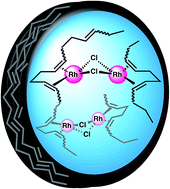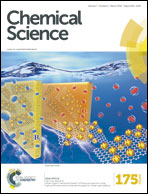Single-chain polybutadiene organometallic nanoparticles: an experimental and theoretical study†
Abstract
High molecular weight polybutadienes and rhodium complexes were used to produce single chain organometallic nanoparticles. Irradiation of high cis-polybutadiene in the presence of a photosensitizer isomerised the double bonds to produce differing cis/trans ratios within the polymer. Notably, a higher cis percentage of carbon–carbon double bonds within the polymer structure led to faster binding of metal ions, as well as their faster removal by competing phosphine ligands. The experimental results were supported and rationalized by DFT computations.



 Please wait while we load your content...
Please wait while we load your content...